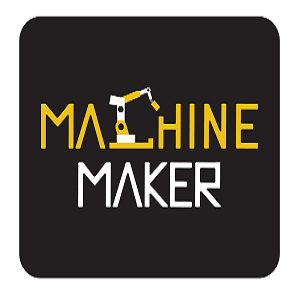STMicroelectronics, a global leader in semiconductor solutions, is enhancing embedded artificial intelligence (AI) capabilities with a new series of microcontrollers designed to bring machine learning (ML) performance to small, power-efficient systems. The STM32N6 microcontroller series, featuring ST’s Neural-ART Accelerator, marks a major step forward, enabling devices in cost-sensitive industries to deliver advanced features like computer vision, audio processing, and sound analysis—capabilities previously beyond the reach of embedded systems.
The STM32N6 is STMicroelectronics’ most powerful microcontroller yet, equipped with the company’s proprietary Neural-ART Accelerator that delivers 600 times the machine-learning performance of current high-end STM32 microcontrollers. Available to select customers since October 2023, it is now set for mass production.
Remi El-Ouazzane, President of Microcontrollers, Digital ICs, and RF Products at STMicroelectronics, said, “We are on the brink of a transformation at the edge, where AI models are increasingly enhancing or replacing workloads. The STM32N6 is the first product to feature our Neural-ART Accelerator, and it signals the beginning of a new era of AI-driven STM32 solutions that will enable innovations across industries.”
Tom Hackenberg, Principal Analyst at Yole Group, added, “AI is no longer confined to large, power-hungry datacenters. IoT edge applications are now leveraging AI for analytics, and the STM32N6 is a prime example of how microcontrollers are integrating AI to provide capabilities like computer vision and sensor performance, all while maintaining energy efficiency.”
LG Electronics has expressed high praise for the STM32N6 microcontroller, highlighting its exceptional AI performance. Yehan Ahn, Task Leader at LG Electronics’ CTO Division, remarked that the device’s compact form factor and the impressive inference speed enabled by its Neural-ART Accelerator make it a perfect match for embedded systems and wearable devices. The STM32N6 has proven instrumental in meeting the company’s demanding performance requirements.
Lenovo Research has also emphasized the groundbreaking capabilities of the STM32N6. Seiichi Kawano, Principal Researcher at Lenovo, commended its neural processing efficiency and power-saving features. According to Kawano, the microcontroller represents a significant step forward in advancing AI technologies for edge computing, providing unparalleled opportunities for innovative research and development.
For Alps Alpine, the STM32N6 has transformed product innovation in the cycling industry. Christian Fuchs, Senior Project Leader at Alps Alpine, noted that the Neural-ART Accelerator’s speed and efficiency have facilitated the development of compact, sensor-based AI devices. These devices, in turn, offer superior user experiences, underscoring the microcontroller’s potential in sensor-driven applications.
Carlo Gavazzi, a leader in sensor technology, has lauded the STM32N6 for expanding the possibilities of their sensor projects. Allan Skou Thomsen, R&D Project Leader, explained that the microcontroller’s robust features—such as the Arm Cortex-M55 core and MIPI-CSI interface—have enabled the company to tackle previously insurmountable challenges. The STM32N6’s unique capabilities have proven to be a game-changer in addressing complex project requirements.
Meta-bounds, a company specializing in augmented reality (AR) devices, has credited the STM32N6 with revolutionizing its AR glasses development. Dr. Zhou Xing, Founding Partner, highlighted the microcontroller’s high performance, energy efficiency, and advanced features like the ISP and Neural-ART Accelerator. These attributes have been instrumental in achieving the high standards required for AR technology.
Autotrak, a company focused on trucking safety, foresees life-saving applications for the STM32N6 in its industry. Engineering Director Gavin Leask emphasized that the microcontroller’s real-time AI capabilities could enable AI-driven driver alerts, helping prevent accidents and enhance overall road safety. The STM32N6 offers a promising solution for safety-critical applications in transportation.
The STM32N6 stands out for its impressive machine-learning capabilities, offering up to 600 giga operations per second (GOPS) through its Neural-ART Accelerator. This level of performance enables the microcontroller to handle advanced AI tasks with exceptional speed and precision, setting a new benchmark for embedded AI applications.
Powered by an 800 MHz Arm Cortex-M55 core, the STM32N6 is the most powerful microcontroller in the STM32 family to date. Delivering a remarkable 3,360 CoreMark score, it ensures outstanding computational performance for demanding applications across various industries.
With 4.2 MB of RAM, the STM32N6 boasts the largest memory capacity ever seen in an STM32 microcontroller. This substantial memory allocation supports resource-intensive AI and multimedia applications, ensuring smooth operation and enhanced functionality.
The microcontroller also includes an advanced Image Signal Processor (ISP), a first for STM32 devices. This ISP optimizes image processing, supports affordable image sensors, and enhances camera capabilities, making it ideal for applications requiring high-quality imaging solutions.
Lastly, the STM32N6 is complemented by a comprehensive AI development suite. ST’s Edge AI Suite simplifies the integration of machine-learning models and supports popular frameworks like TensorFlow Lite, Keras, and ONNX. This suite streamlines development, allowing engineers to harness the full potential of the STM32N6 in AI-driven projects. STMicroelectronics continues to push the boundaries of embedded processing with the STM32N6, offering a versatile solution for a wide range of edge AI applications.
With a workforce of over 50,000, STMicroelectronics is dedicated to advancing semiconductor technologies that drive smarter mobility, energy efficiency, and the growth of the Internet of Things. The company is also focused on achieving carbon neutrality by 2027 for Scope 1 and 2 emissions, as well as partially for Scope 3.







